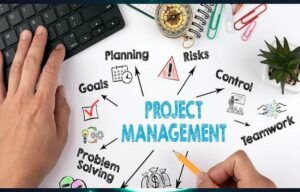Project management is a vital part of a project: planning it is the first step to achieving your goal. It is this first step that must be completed in order to obtain the approval of your collaborators and the resources that will be injected into this project.
Proper planning is very helpful in any scenario, as it saves valuable time during the development phase. A good plan has many components.
For example, you can determine the dates when your resources will be available so that you are not surprised if they are not ready on time. You also won’t have to worry about paying bills or other financial transactions every day, because you’ll have scheduled a process that will take care of everything at the end of each payment cycle you establish.
Planning effectively streamlines the development process itself.
So what to do? Here are the 6 steps you need to go through for successful project management.
1. Identify and meet stakeholders
A stakeholder can be any individual or company that may be affected by the outcome of your project plan. So your customers and end users are also stakeholders. It’s your job to keep their considerations and interests in the loop as you create your project plan.
You need to meet and communicate with project sponsors and key stakeholders. This meeting will help you discuss their expectations , establish key dates for the schedule, the scope of the project and its budget .
Once all this is done, you can create a specification of the scope of the project. It is a document that records all the details of the scope of the project, and which will notably list all the stakeholders on the same page. This will reduce communication issues which can be very costly at the development stage.
2. Set and prioritize goals
Once you’re done collecting data on what the stakeholder really wants, set specific priorities and goals for you and your team. These goals should effectively describe all the project objectives you need to achieve. You should ensure that the language used in this document is clear and not too technical, so that it is easy to communicate and share with all stakeholders without difficulty.
3. Define deliverables
The next step is to determine your project deliverables. You must split it into key steps, which are necessary to complete the project. You should also identify the specific results that the project should produce.
You will need to estimate all due dates for each milestone leading up to each deliverable listed in your plan. You will then be able to show progress to each stakeholder. These dates are subject to change at the next stage.
4. Create the project schedule
The project schedule is a crucial point in your success. You will need to review each deliverable and specify all the tasks that need to be performed to complete each product .
For each task, you need to define how long it will take, what resources are actually needed to complete it, and who are the required team members which will be best suited to the execution of the project. Next, you need to identify all the dependencies related to your project. Are there tasks that need to be completed first so others can begin? Involve your team, better able to know how long this or that task can take, or to find the interdependencies. You should enter your dependencies, milestones, and deliverables in your Gantt
chart , or search for templates and apps online that can help you with this task. You should also know how to write a project management report. It will be useful to have a summary review of the current state of your project.
5. Identify problems and perform a risk assessment
No project is risk free and you need to have different emergency scenarios if the original one doesn’t work.
Are there any hidden or foreseeable issues that may affect the project planning process? These issues can be like a team member’s vacation or an upcoming holiday that can delay productivity.
You need to clearly identify what these issues are, but first you need to properly assess its impact to make sure whether it poses a risk to the project or not.
Remember that when you’re in the process of developing a project plan, you need to know how to manage risk and consider all the steps that can prevent or reduce risk .




